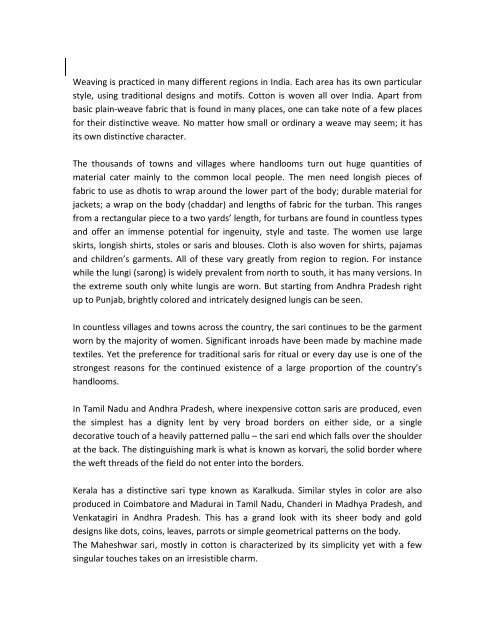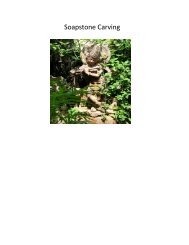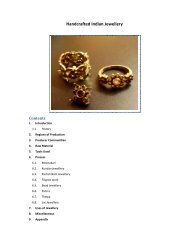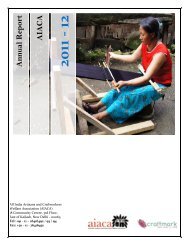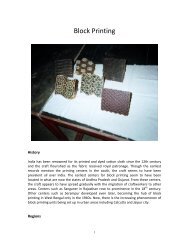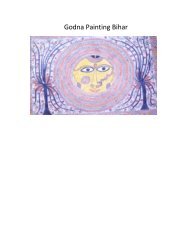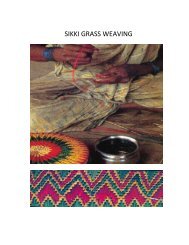Create successful ePaper yourself
Turn your PDF publications into a flip-book with our unique Google optimized e-Paper software.
Weaving is practiced in many different regions in India. Each area has its own particular<br />
style, using traditional designs and motifs. Cotton is woven all over India. Apart from<br />
basic plain-weave fabric that is found in many places, one can take note of a few places<br />
for their distinctive weave. No matter how small or ordinary a weave may seem; it has<br />
its own distinctive character.<br />
The thousands of towns and villages where handlooms turn out huge quantities of<br />
material cater mainly to the common local people. The men need longish pieces of<br />
fabric to use as dhotis to wrap around the lower part of the body; durable material for<br />
jackets; a wrap on the body (chaddar) and lengths of fabric for the turban. This ranges<br />
from a rectangular piece to a two yards’ length, for turbans are found in countless types<br />
and offer an immense potential for ingenuity, style and taste. The women use large<br />
skirts, longish shirts, stoles or saris and blouses. Cloth is also woven for shirts, pajamas<br />
and children’s garments. All of these vary greatly from region to region. For instance<br />
while the lungi (sarong) is widely prevalent from north to south, it has many versions. In<br />
the extreme south only white lungis are worn. But starting from Andhra Pradesh right<br />
up to Punjab, brightly colored and intricately designed lungis can be seen.<br />
In countless villages and towns across the country, the sari continues to be the garment<br />
worn by the majority of women. Significant inroads have been made by machine made<br />
textiles. Yet the preference for traditional saris for ritual or every day use is one of the<br />
strongest reasons for the continued existence of a large proportion of the country’s<br />
handlooms.<br />
In Tamil Nadu and Andhra Pradesh, where inexpensive cotton saris are produced, even<br />
the simplest has a dignity lent by very broad borders on either side, or a single<br />
decorative touch of a heavily patterned pallu – the sari end which falls over the shoulder<br />
at the back. The distinguishing mark is what is known as korvari, the solid border where<br />
the weft threads of the field do not enter into the borders.<br />
Kerala has a distinctive sari type known as Karalkuda. Similar styles in color are also<br />
produced in Coimbatore and Madurai in Tamil Nadu, Chanderi in Madhya Pradesh, and<br />
Venkatagiri in Andhra Pradesh. This has a grand look with its sheer body and gold<br />
designs like dots, coins, leaves, parrots or simple geometrical patterns on the body.<br />
The Maheshwar sari, mostly in cotton is characterized by its simplicity yet with a few<br />
singular touches takes on an irresistible charm.


